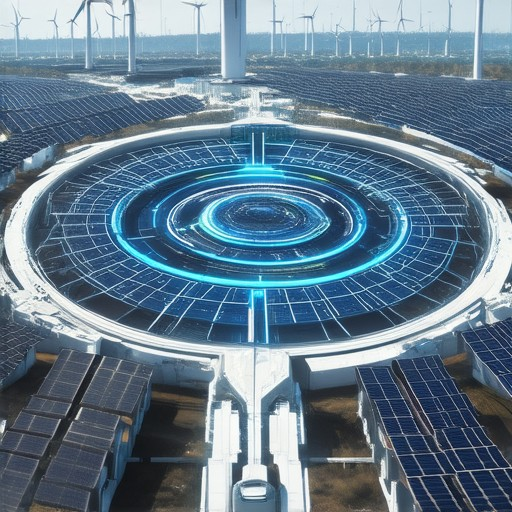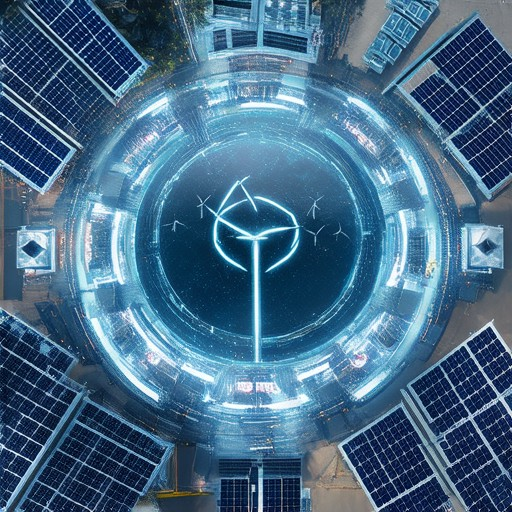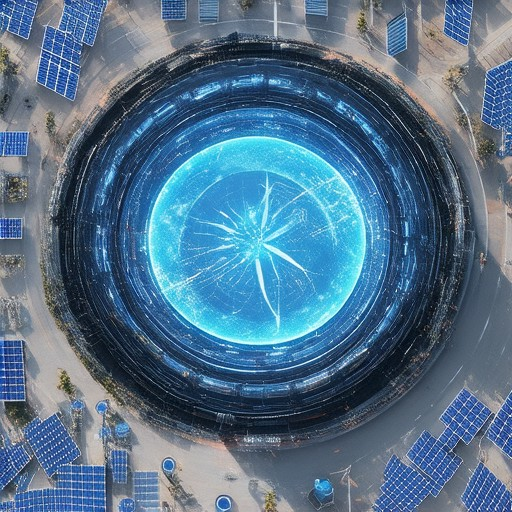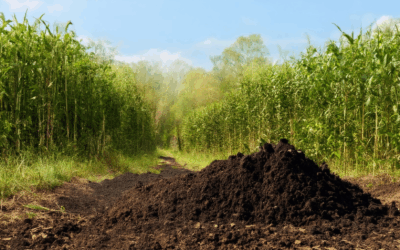Generating green energy from waste is a groundbreaking innovation that offers a sustainable solution to modern environmental challenges. By harnessing the potential of organic waste materials, individuals and communities can significantly reduce landfill dependency while contributing to renewable energy production. This process not only mitigates environmental harm but also creates a cleaner, greener future through innovative waste management practices. From turning food scraps into biogas to transforming agricultural waste into biofuels, the possibilities are vast and transformative. In this article, we explore effective strategies, real-world examples, and future trends in generating green energy from waste, highlighting its role in fostering a circular economy and promoting sustainability.
Key Takeaways
- Convert organic waste into biogas for clean and renewable energy.
- Utilize pyrolysis to create biochar, enhancing soil fertility.
- Implement composting systems to generate heat and enrich soil.
- Capture energy from wastewater to power communities sustainably.
- Adopt scalable waste-to-energy solutions tailored to local needs.
- Minimize landfill dependency through efficient waste conversion.
- Ensure safe handling and hygiene protocols for waste management.
- Explore cost-effective strategies supported by government incentives.
- Invest in technological advancements for higher efficiency and sustainability.
- Educate communities to foster awareness and adoption of green energy solutions.

What is Waste to Green Energy?
Waste-to-green energy, also known as energy-from-waste, is a sustainable process that converts non-recyclable waste into a form of renewable energy. This method helps reduce landfill dependency and minimizes environmental impact by transforming waste into useful energy.
Key Components of Waste-to-Green Energy:
- Processes Involved :
- Incineration : High-temperature combustion of waste generates heat, which is then converted into electricity using turbines.
- Anaerobic Digestion : Organic waste is broken down by bacteria in the absence of oxygen, producing biogas (a mix of methane and carbon dioxide), which can be burned to generate energy.
- Pyrolysis : A thermal decomposition process that converts organic waste into biochar, a carbon-rich material that can be used as a soil amendment.
- Benefits :
- Reduces Landfill Use : Decreases the amount of waste sent to landfills, preventing methane emissions and leachate production.
- Energy Generation : Converts waste into electricity or heat, supporting energy independence and reducing reliance on fossil fuels.
- Sustainable Practices : Promotes a circular economy by keeping materials in use longer and reducing resource depletion.
- Global Impact :
- Waste-to-energy plants contribute to reducing greenhouse gas emissions, aiding in efforts to combat climate change.
- Countries around the world are adopting these technologies to meet their renewable energy targets and improve waste management infrastructure.
- Challenges :
- High Initial Costs : Building and operating waste-to-energy facilities can be expensive.
- Public Perception : Concerns about health risks and environmental safety associated with certain processes can hinder adoption.
- Regulatory Hurdles : Variability in regulations and standards can complicate implementation.
Examples and Case Studies:
- Cities like San Francisco have successfully implemented waste-to-energy programs, combining composting and recycling with advanced disposal methods.
- Regions with specific waste compositions may find different technologies more suitable, requiring tailored approaches.
Implementation Steps:
- Conduct a thorough needs assessment to determine the most suitable waste-to-energy technology.
- Secure funding through grants, loans, or partnerships with private investors.
- Engage stakeholders, including local governments, NGOs, and the community, to ensure support and participation.
- Develop educational campaigns to address concerns and promote the benefits of waste-to-energy.
Competitors and Solutions:
- Companies like Veolia and Covanta are leading providers offering various technologies and services. Comparing their offerings can guide decision-making based on specific project requirements.
By embracing waste-to-green energy, we can create a more sustainable and resource-efficient future, aligning with global environmental goals and promoting a greener lifestyle.
How to Turn Waste into Renewable Energy
Turning waste into renewable energy involves several processes that convert discarded materials into usable forms of energy. Below are some effective methods:
- Incineration: High-temperature combustion of waste reduces its volume and produces energy through heat. Commonly used for municipal solid waste (MSW), this method generates electricity and reduces landfill dependency.
- Pyrolysis: A thermal decomposition process that breaks down organic waste in the absence of oxygen, producing biochar and syngas. Biochar can be reused as a soil amendment, while syngas can be burned for energy or further processed into liquids.
- Gasification: Similar to pyrolysis, this process converts waste into syngas, which can be utilized for heating, powering turbines, or producing synthetic fuels. It is particularly efficient for treating biomass and organic waste.
- Anaerobic Digestion: Decomposes organic waste in oxygen-free environments, producing biogas (methane and carbon dioxide) as a renewable energy source. This method is ideal for food scraps and sewage sludge.
To maximize efficiency, consider these tips:
- Combine Methods: Integrate multiple processes for a holistic approach. For example, use anaerobic digestion for organic waste and gasification for mixed waste streams.
- Local Infrastructure: Assess your region’s capabilities and regulations before implementing large-scale projects. Some areas may prefer certain methods over others due to cost and feasibility.
- Educate Communities: Public awareness campaigns can increase participation in waste-to-energy programs, ensuring sustainable practices long-term.
For more details on these methods and their implementation, explore our waste-to-energy guide and learn how to harness energy from everyday waste effectively.

Can Energy Be Produced from Waste?
Yes, energy can definitely be generated from waste through various innovative processes. Here are some common methods:
- Combustion: Waste materials are burned in controlled environments to release heat energy, which is then converted into electricity or steam power.
- Gasification: A process that converts organic waste into synthetic gas (syngas), which can be used to generate electricity or fuel.
- Pyrolysis: A thermal decomposition process that turns non-recyclable waste into biochar, char, and carbon dioxide. Pyrolysium.org highlights how this process can transform waste into valuable resources.
- Anaerobic Digestion: Decomposition of organic waste in oxygen-free environments produces biogas, which can be captured and used as a renewable energy source.
- Landfill Gas Recovery: Methane gas produced by decomposing waste in landfills is extracted and used to generate electricity or heat energy.
These methods demonstrate effective ways to harness energy from waste, contributing to sustainable energy solutions. Pyrolysium.org emphasizes the importance of adopting eco-friendly technologies like pyrolysis to reduce environmental impact and promote clean energy production.

How to Make Energy from Human Waste
Human waste can be converted into energy through several innovative methods, each offering unique benefits and considerations. Below are the primary approaches:
- Biogas Production: Utilize specialized biogas plants that process organic waste to generate methane gas. This gas can be used to power generators or burn in cookstoves, providing a clean energy source.
- Pyrolysis Process: Heat waste materials at high temperatures in the absence of oxygen to produce biochar, a carbon-rich substance. Biochar can be used as a soil amendment, aiding in agricultural practices and further reducing waste.
- Composting Systems: Break down organic waste through composting, which generates heat. While primarily used for nutrient cycling, this process can contribute to indirect energy production by capturing residual heat.
- Wastewater Energy Generation: Install systems that convert wastewater movement or content into electricity. These units can be integrated into toilets or sewage systems, particularly beneficial in areas lacking access to conventional energy sources.
Considerations and Benefits:
- Safety and Hygiene: Essential to handle waste carefully to prevent contamination and health risks associated with energy conversion.
- Scalability: Methods vary in scale, from small household units to large community installations, catering to diverse needs and resource availability.
- Environmental Impact: Reduces landfill dependency, lowers emissions, and supports a circular economy by minimizing waste and maximizing resource utilization.
- Economic Viability: Initial investments may be required, yet long-term savings from reduced landfill costs and energy generation can offset expenses. Incentives and support from governments or organizations often facilitate adoption.
Challenges and Future Directions:
- Technological Access: Availability of advanced systems may be limited, necessitating further research and distribution to broader audiences.
- Public Acceptance: Community education and reassurance regarding safety and efficacy are crucial for widespread adoption.
- Research and Development: Continued innovation is essential to enhance efficiency, safety, and accessibility of waste-to-energy solutions.
In conclusion, converting human waste into energy presents a promising pathway toward sustainable energy production. By exploring methods like biogas, pyrolysis, composting, and wastewater energy systems, we can develop effective strategies that align with global renewable energy goals while addressing environmental and economic challenges.
Can Human Waste Be Turned Into Energy?
Yes, human waste can be converted into energy through a process called anaerobic digestion. This method harnesses bacteria to break down organic material in waste, producing biogas, which is primarily composed of methane. This gas can be captured and utilized for energy.
How Does It Work?
- The process involves collecting waste and allowing it to decompose in a controlled environment without oxygen.
- Bacteria break down the organic matter, releasing gases such as methane and carbon dioxide.
- These gases can be captured and used for energy generation, such as powering vehicles or heating buildings.
Applications and Benefits
- Energy Generation: The biogas produced can be used to generate electricity, heat homes, or fuel vehicles.
- Waste Management: It reduces the amount of waste sent to landfills and decreases greenhouse gas emissions.
- Sustainability: A renewable energy source that aligns with sustainable living practices.
Examples and Companies
- Companies like BioCycle provide systems for converting waste into energy, demonstrating its practical application.
- Digesters are commonly used in agricultural settings to manage manure and produce biogas for energy needs.
Challenges and Considerations
- Maintaining proper conditions, such as temperature control, is essential for effective decomposition.
- Odor management and handling sludge are additional considerations for large-scale implementations.
Scalability and Future Potential
Anaerobic digestion has significant potential for scalability. Wider adoption could reduce environmental impacts and promote sustainable energy solutions.
By implementing anaerobic digestion systems, communities can contribute to a cleaner, greener future while addressing waste management challenges.

Generating Electricity from Sewage
Sewage, often considered a waste product, holds significant potential as a renewable energy source. By utilizing advanced biological and chemical processes, it’s possible to convert wastewater into electricity effectively.
Microbial Fuel Cells (MFCs)
Microbial Fuel Cells (MFCs) are a cutting-edge technology that harnesses the metabolic activity of bacteria found in wastewater. Here’s how they work:
- Bacteria in the anode chamber break down organic matter, releasing electrons.
- These electrons flow through a wire to the cathode, where they combine with ions to form electrical current.
- This process creates clean electricity that can power generators and supply homes or businesses with energy.
MFCs are highly efficient and sustainable, making them a promising solution for waste-to-energy conversion.
Anaerobic Digestion
Another method involves anaerobic digestion, where bacteria break down organic material in an oxygen-free environment, producing biogas:
- Biogas consists primarily of methane and carbon dioxide.
- The methane can be burned in a gas turbine to generate electricity.
- Digestate produced during this process can be used as fertilizer, adding value to the treatment process.
Anaerobic digestion is resource-intensive but offers a sustainable way to repurpose wastewater.
Electrolytic Cell Technology
Electrolytic cells can also be used to treat sewage by splitting it into hydrogen and oxygen gases:
- Water is separated into H₂ and O₂ using electricity.
- These gases can be recombined and burned to generate electricity.
However, this method is less efficient than MFCs due to the additional energy required for electrolysis.
Centrifugal Separation
Centrifuges can separate sewage sludge from water, allowing the sludge to be treated for biogas production:
- Sludge is collected and treated to produce biogas through anaerobic digestion.
- Bioenergy generated from this process can be used to power gas engines or turbines.
While effective, centrifugal separation requires significant upfront investment in equipment.
Combined Heat and Power Systems
Larger sewage treatment facilities can utilize combined heat and power (CHP) systems:
- Heat generated during the treatment process is captured and used to generate electricity and provide hot water.
- This dual-purpose system increases overall efficiency and reduces environmental impact.
CHP systems are particularly beneficial in regions with cold climates, where heat generation is essential.
Considerations for Implementation
Evaluating factors such as local regulations, available technology, and sewage characteristics is crucial for selecting the most suitable method. Each approach has unique advantages and may be better suited for specific communities based on their needs and resources.
Conclusion
Generating electricity from sewage is a viable and sustainable solution that aligns with global efforts toward renewable energy. Methods like MFCs and anaerobic digestion offer efficient and resourceful ways to harness energy from wastewater, contributing to a cleaner and more sustainable future.




0 Comments